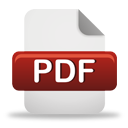

CLC number: TH49
On-line Access: 2024-08-27
Received: 2023-10-17
Revision Accepted: 2024-05-08
Crosschecked: 2017-10-11
Cited: 0
Clicked: 7139
Feng-qing Xiao, Ying-zhe Wu, Jin-yang Zheng, Cun-jian Miao, Xiao-bo Zhu. A load-holding time prediction method based on creep strain relaxation for the cold-stretching process of S30408 cryogenic pressure vessels[J]. Journal of Zhejiang University Science A,in press.Frontiers of Information Technology & Electronic Engineering,in press.https://doi.org/10.1631/jzus.A1600798 @article{title="A load-holding time prediction method based on creep strain relaxation for the cold-stretching process of S30408 cryogenic pressure vessels", %0 Journal Article TY - JOUR
Abstract: This paper reports a systematic research on the load-holding time prediction and the corresponding experimental work. The authors proposed the load-holding time method for the cold-stretching process of S30408 cryogenic pressure vessels based on room-temperature creep strain relaxation. Then, they conducted the FEM analysis and the experimental measurements. They found that the measured strain relaxation times can match the calculated values within a good accuracy and predict the load-holding time for the process well. The results are new and interesting. The method established here is of a great significance for the predication of the holding-time of the cold-stretching process of S30408 cryogenic pressure vessels.
一种基于蠕变应变弛豫的S30408深冷容器应变强化保载时间预测方法创新点:1. 根据室温蠕变应变弛豫理论,保载过程即为材料在室温蠕变中应变速率逐渐减缓、材料结构逐渐稳定的过程;本文据此获得了保载时间的计算模型。2. 结合材料试验与容器试验,将计算模型中涉及的多个微观变量转换为唯一宏观变量--圆柱壳上的最大环向应力,可为常规工业生产提供定量的、具有实际可操作性的技术支持。 方法:1. 根据室温蠕变应变弛豫理论,建立蠕变本构关系,得出保载时间计算模型。2. 通过材料试验,考虑实际生产中的特定条件,将保载时间计算模型的多个微观变量简化为唯一宏观变量。3. 通过在多个工业规模的容器上进行实验,比较验证所提计算方法的可靠性。 结论:1. 室温蠕变应变弛豫理论可以用于描述应变强化保载过程中的材料变化。2. 容器保载时长,即材料应变弛豫时长,与其所承受的最大应力有关。3. 所提出的保载时间计算方法可以为容器保载时间提供可靠预测;其平均绝对误差为7.53%,且绝大部分情况下偏于保守。 关键词组: Darkslateblue:Affiliate; Royal Blue:Author; Turquoise:Article
Reference[1]AQSIQ (General Administration of Quality Supervision, Inspection and Quarantine of the People’s Republic of China), 2009. Stainless Steel Plate, Sheet and Strip for Pressure Equipments, GB 24511-2009. Standardization Administration of the People’s Republic of China, Beijing, China (in Chinese).  [2]AQSIQ (General Administration of Quality Supervision, Inspection and Quarantine of the People’s Republic of China), 2010. Metallic Materials—Tensile Testing—Part 1: Method of Test at Room Temperature, GB/T 228.1-2010. Standardization Administration of the People’s Republic of China, Beijing, China (in Chinese).  [3]AQSIQ (General Administration of Quality Supervision, Inspection and Quarantine of the People’s Republic of China), 2012. Metallic Materials—Uniaxial Creep Testing Method in Tension, GB/T 2039-2012. Standardization Administration of the People’s Republic of China, Beijing, China (in Chinese).  [4]ASME (American Society of Mechanical Engineers), 2015. Boiler and Pressure Vessel Code VIII, Division 1: Rules for Construction of Pressure Vessels, ASME BPVC VIII. ASME, New York, USA.  [5]Bao, G.H., Chen, Y., Ma, J.E., et al., 2015. Microstructure and properties of cold drawing Cu-2.5% Fe-0.2% Cr and Cu-6% Fe alloys. Journal of Zhejiang University-SCIENCE A (Applied Physics & Engineering), 16(8):622-629.  [6]Boyle, J.T., Spence, J., 2013. Stress Analysis for Creep. Butterworth & Co., London, UK.  [7]CEN (The European Committee for Standardization), 2002. Cryogenic Vessels—Static Vacuum Insulated Vessels, EN 13458-2-2002. CEN, Brussels, Belgium.  [8]Davis, M., Thompson, N., 1950. Creep in a precipitation-hardened alloy. Proceedings of the Physical Society. Section B, 63(11):847-866.  [9]Feng, D., 1999. Metal Physics: Metal Mechanical Property (Vol. 3). Science Press, Beijing, China (in Chinese).  [10]ISO (International Organization for Standardization), 2009. Metallic Materials—Uniaxial Creep Testing in Tension— Method of Test, ISO 204-2009. International Organization for Standardization, Geneva, Switzerland.  [11]Kassner, M.E., Geantil, P., Rosen, R.S., 2011. Ambient temperature creep of type 304 stainless steel. Journal of Engineering Materials and Technology, 133(2):021012.  [12]Krempl, E., 1979. An experimental study of room-temperature rate-sensitivity, creep and relaxation of AISI type 304 stainless steel. Journal of the Mechanics and Physics of Solids, 27(5-6):363-375.  [13]Li, H.D., Xu, S.L., 2016. Rate dependence of ultra high toughness cementitious composite under direct tension. Journal of Zhejiang University-SCIENCE A (Applied Physics & Engineering), 17(6):417-426.  [14]Lim, J.S., Kim, T.S., Kim, S.H., 2013. Ultimate strength of single shear bolted connections with cold-formed ferritic stainless steel. Journal of Zhejiang University-SCIENCE A (Applied Physics & Engineering), 14(2):120-136.  [15]Miao, C.J., Zheng, J.Y., Gao, X.Z., et al., 2013. Investigation of low-cycle fatigue behavior of austenitic stainless steel for cold-stretched pressure vessels. Journal of Zhejiang University-SCIENCE A (Applied Physics & Engineering), 14(1):31-37.  [16]Nabarro, F.R.N., 2001. The time constant of logarithmic creep and relaxation. Materials Science and Engineering: A, 309-310: 227-228.  [17]Schoeck, G., 1961. Mechanical Behaviour of Materials at Elevated Temperature. McGraw–Hill, New York, USA.  [18]Wang, S.H., Zhang, Y.G., Chen, W.X., 2001. Room temperature creep and strain-rate-dependent stress-strain behavior of pipeline steels. Journal of Materials Science, 36(8):1931-1938.  [19]Wang, Y.Q., Liao, X.W., Zhang, Y.Y., et al., 2015. Experimental study on the through-thickness properties of structural steel thick plate and its heat-affected zone at low temperatures. Journal of Zhejiang University-SCIENCE A (Applied Physics & Engineering), 16(3):217-228.  [20]Zheng, J.Y., Miao, C.J., Shou, B.N., 2009. Light-weight: a trend in the development of pressure vessels. Pressure Vessel Technology, 26(9):42-48 (in Chinese).  [21]Zheng, J.Y., Guo, A.B., Miao, C.J., et al., 2011. Cold stretching of cryogenic pressure vessels from austenitic stainless steels. ASME 2011 Pressure Vessels and Piping Conference, p.693-698.  Journal of Zhejiang University-SCIENCE, 38 Zheda Road, Hangzhou
310027, China
Tel: +86-571-87952783; E-mail: cjzhang@zju.edu.cn Copyright © 2000 - 2025 Journal of Zhejiang University-SCIENCE | ||||||||||||||

 ORCID:
ORCID:
Open peer comments: Debate/Discuss/Question/Opinion
<1>